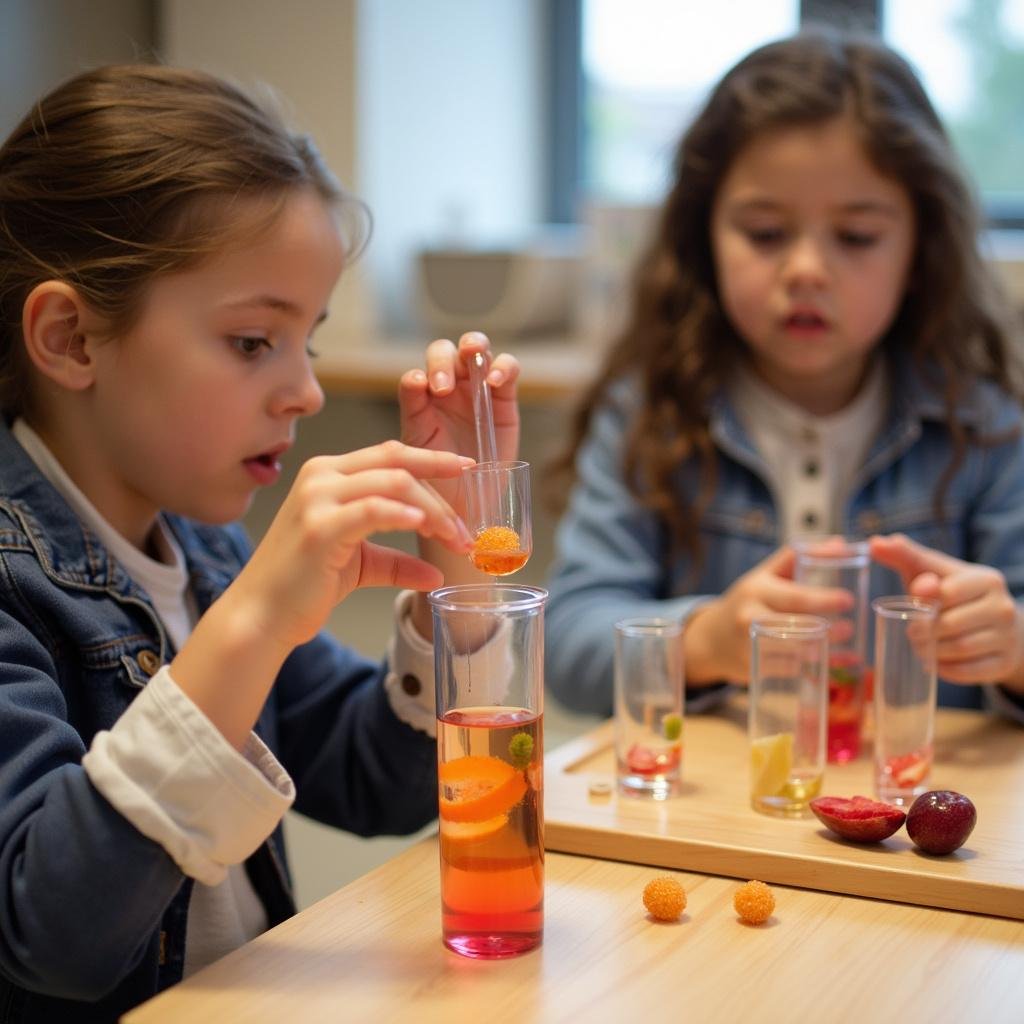1. Introduction
Welcome to an exciting world where fun food science experiments become engaging adventures for children! Introducing children to food science activities offers a fantastic opportunity to teach them about basic chemistry, biology, and nutrition—all while having a blast. Whether you’re a parent, teacher, or caregiver, incorporating creative food experiments into your activities can ignite curiosity and foster a lifelong love for learning and discovery. In this comprehensive guide, we will explore some of the most entertaining and educational food science experiments for children, ensuring your young scientists stay fascinated and eager to uncover more. Plus, we’ll share valuable tips on creating a safe, cozy environment—complete with house slippers or indoor slippers—to enhance comfort and focus during these hands-on activities.
2. Why Conduct Food Science Experiments for Kids?
Food science experiments for children are incredibly more than just entertaining projects—they are powerful educational tools that help develop critical observation skills and scientific thinking. These experiments allow kids to understand how ingredients like baking soda, vinegar, and sugar interact, while also exploring the fundamentals of healthy eating habits. Moreover, sensory-rich experiences with food naturally capture children’s attention, making learning memorable and immersive. Creating a welcoming environment for these activities, such as wearing comfy slippers or slippers for kids, can boost concentration and comfort, enabling kids to focus on the fun science rather than discomfort. For example, having soft slippers or plush slippers during indoor experiments adds a layer of coziness that sustains engagement and enthusiasm.
3. Top 5 Fun Food Science Experiments for Children
Below are some of the most popular and captivating food science experiments that you can do at home or in the classroom to promote curiosity and scientific thinking in children:
- Floating Fruit in Test Tubes
- Colorful Volcano Eruption
- Homemade Rock Candy Crystals
- Invisible Ink with Lemon Juice
- Milk Color Explosion
Floating Fruit in Test Tubes
This experiment illustrates buoyancy and density principles. Fill a test tube with water and add slices of different fruits—such as strawberries, grapes, or citrus segments. Observe how varying fruits float or sink, demonstrating concepts of density and displacement. Kids love seeing the floating and sinking action, which sparks curiosity about why certain objects behave differently in liquids. For added comfort, supervise children wearing house slippers, slip-on slippers, or plush slippers to keep their feet cozy during extended activities. This comfort helps them focus better on the fascinating science behind buoyancy while feeling relaxed.

Colorful Volcano Eruption
This classic experiment uses baking soda and vinegar to create an explosive, colorful volcano, demonstrating acid-base reactions in a fun way. Mix food coloring with vinegar to produce vibrant “lava” and watch it spill over the sides of a small model volcano, creating a captivating eruption. It’s a perfect introduction to chemical reactions, giving children a spectacular show of bubbling, colorful fun. During this experiment, wearing cozy slippers or indoor slippers keeps little feet warm and comfortable, especially if you’re conducting the activity indoors in a cooler environment. Comfort is key for keeping young scientists engaged and excited about science.
Homemade Rock Candy Crystals
Growing sugar crystals is a fascinating process that reveals the science of crystallization. Dissolve a large amount of sugar in hot water, then suspend a clean stick or string in the solution. Over several days, children can observe the gradual formation of beautiful sugar crystals, learning about the principles of crystallization and patience. It’s an ideal activity for quiet afternoons or science days. To ensure delightful comfort, encourage children to wear soft slippers or plush slippers during the process, turning this into a cozy indoor activity that sparks wonder and curiosity.
Invisible Ink with Lemon Juice
All you need is lemon juice and paper to create secret messages. Use a cotton swab or paintbrush to brush lemon juice onto paper, then reveal hidden messages by gently heating the paper—using a lamp or iron (with adult supervision). This experiment demonstrates chemical reactions and oxidation, illustrating how invisible ink works. As children craft their secret messages, having them wear non-slip slippers or indoor slippers provides safety on smooth surfaces and adds to their comfort, creating a relaxed environment conducive to creative experimentation.
Milk Color Explosion
Using milk, food coloring, and dish soap, kids can create a mesmerizing swirl of colors. Pour milk into a shallow dish, add drops of different food coloring, then dip a cotton swab dipped in dish soap into the colors. Watch as the colors burst and swirl in a mesmerizing display—an excellent demonstration of surface tension and chemical reactions. This lively activity is perfect for casual family fun or classroom experiments. Paired with soft slippers or slippers for kids, children can enjoy their science exploration in a cozy, stress-free setting where comfort enhances focus and enjoyment.
4. Tips for a Successful Food Science Experiment Day
- Create a safe environment: Always supervise children closely, especially when working with heat, acids, or small objects.
- Set up a kid-friendly workstation: Use a sturdy table with a protective covering; encourage children to wear comfortable slippers for indoor experiments to keep feet warm and secure.
- Prepare all materials in advance: Organize ingredients and tools beforehand to ensure the activities run smoothly and safely.
- Discuss the science behind each experiment: Explain concepts in simple terms to deepen understanding and foster curiosity.
- Encourage creativity and exploration: Let kids suggest their own variations or ideas, nurturing innovation and engagement throughout the process.
5. FAQs about Food Science Experiments for Children
What are some simple food science experiments for kids?
Some easy and exciting activities include creating rainbow layers in a jar, making baking soda and vinegar volcanoes, and growing crystal sugar or salt formations. These experiments require minimal materials and are perfect for sparking basic scientific understanding in young children, all while wearing comfy slippers for indoor comfort.
How can I keep children safe during food science experiments?
Supervise children at all times, especially when working with hot liquids, acids, or sharp objects. Use safety gear like gloves or goggles if needed, and ensure their environment is safe with anti-slip slippers or slippers for kids to prevent slips and falls. Having a designated, clutter-free workspace also contributes to safety and smooth execution of experiments.
What materials are needed for food science experiments?
Basic household kitchen ingredients such as baking soda, vinegar, sugar, and food coloring are common. Additional materials include test tubes, sticks, cotton swabs, and small containers. Prepping all supplies beforehand ensures a hassle-free experience and safe handling during each experiment.
6. Conclusion
Food science experiments for children offer a wonderful blend of fun, learning, and discovery. These activities stimulate curiosity, teach essential scientific principles, and promote hands-on engagement—all while emphasizing comfort and safety. Incorporating cozy slippers or slippers for kids creates a welcoming environment that keeps children relaxed and focused as they explore the intriguing world of food science. So gather your ingredients, safety equipment, and a curious mindset, and start experimenting today—who knows, you might just find the next young scientist in your home or classroom!

